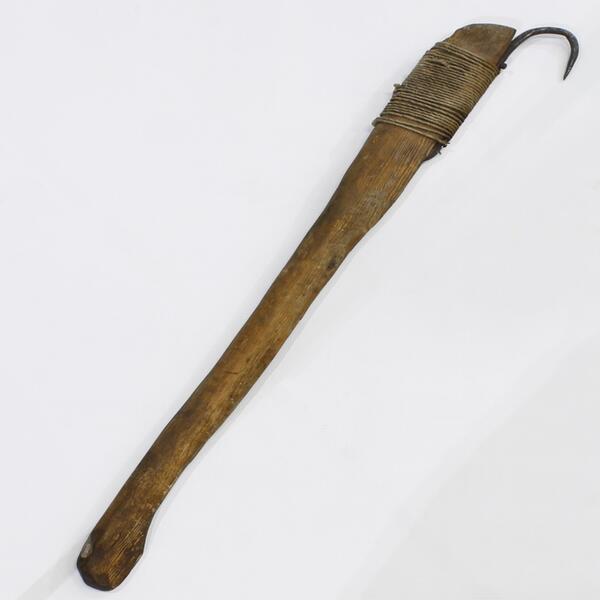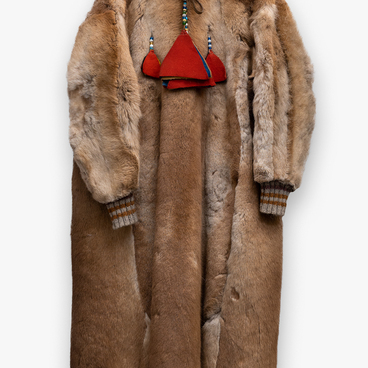The Sami fishing season traditionally lasted from spring to fall. Lyap fishing gaffs were the tools they used in fishing.
A lyap is a word borrowed from the Sami language, where it means the same thing as in Russian, namely a device for pulling out fish. A lyap is an ancient fishing tool. It was used by commercial fishermen and combined the functions of a pole hook (a pole with a metal hook and a spike) and a mallet. It was most widespread in the Russian North. It was used in longline fishing for cod, catfish and other fish species. A longline is a marine commercial multi-hook tackle for fishing with bait, mostly for bottom fish.
A fishing gaff is distinguished from an ordinary gaff by a thickening at the end of the wooden handle on the opposite side from the attached iron hook.
The technology of using the gaff was very simple. While hauling in the longline, as soon as the head of a fish popped out of the water, it was immediately stunned, hooked and then cast into the boat. Besides longline fishing, the fishing gaff was used to “hook” large fish: salmon, inconnu, burbot and others.
Along with reindeer husbandry, fishing was very important in the economic activity of the Sami people. It did not have such universal influence on other areas of work life as reindeer husbandry, but the share of income from fishing was relatively large. Fishing provided the Sami not only with goods for sale, but also with food. For most of the year, fish was the main foodstuff for the households with small reindeer herds.
In Russia, unlike Norway or Sweden, Sami were not distinguished into nomadic and sedentary types, or mountain and lake ones. The way of life of all the Sami living on the Kola Peninsula before 1911 can be termed semi-nomadic. Fishing and rigidly observed property rights to fishing grounds were the basis of the dual nature of Sami’s settled and nomadic life.
In the 15th–16th centuries, during the period of
formation of territorial communities among the Sami, water and hunting grounds
were redistributed jointly by the villages which were dependent on the
migration of the population.


